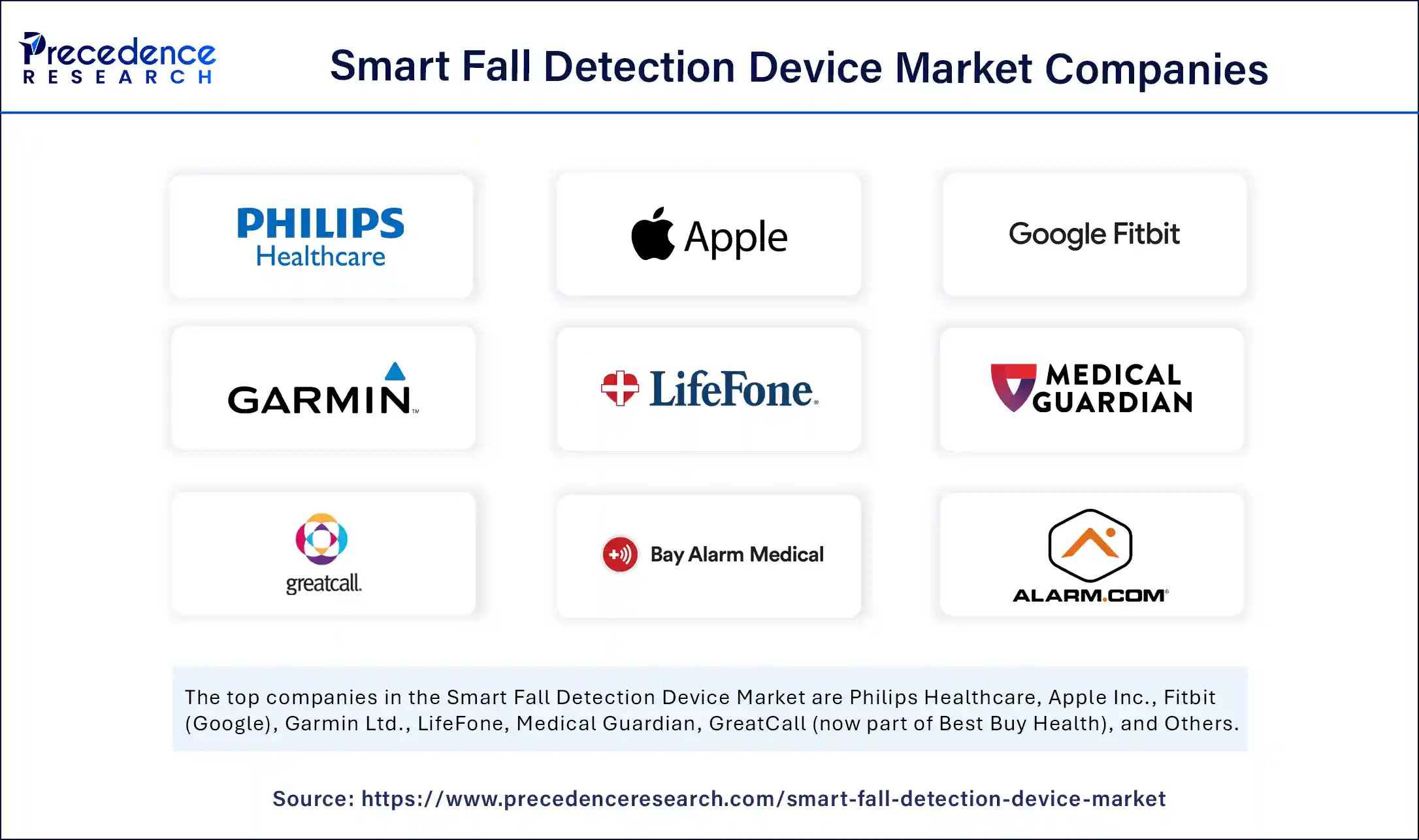The global smart fall detection device market is on track to soar from $1.41 billion in 2025 to a staggering $4.18 billion by 2034, propelled by a compound annual growth rate (CAGR) of 12.83% over the forecast period. This dynamic growth is fueled by the increasing elderly population, rapid advancement in sensor technology, and the integration of artificial intelligence and IoT solutions—creating a powerful intersection between healthcare and cutting-edge tech.

Smart Fall Detection Device Market Key Insights
-
The global smart fall detection device market was valued at $1.25 billion in 2024 and is expected to reach $4.18 billion by 2034, expanding at a CAGR of 12.83%.
-
North America leads the market, accounting for approximately 35% share in 2024.
-
The Asia Pacific region is the fastest growing, powered by tech innovation and a rapidly aging population.
-
In the U.S., market value is projected to rise from $153.13 million (2024) to $526.78 million (2034), with a CAGR of 13.15%.
-
Personal health monitoring devices hold the largest share by application, while smartwatches are the dominant product type.
-
Online retail channels accounted for nearly 48% of market share in 2024.
Get this report to explore global market size, share, CAGR, and trends, featuring detailed segmental analysis and an insightful competitive landscape overview @ https://www.precedenceresearch.com/sample/6587
Revenue Table
| Indicator | 2024 Value | 2025 Value | 2034 Value | CAGR (2025-2034) |
|---|---|---|---|---|
| Global Market Size | $1.25B | $1.41B | $4.18B | 12.83% |
| U.S. Market Size | $153.13M | 172.73M | $526.78M | 13.15% |
How Is AI Reshaping Fall Detection Devices?
Artificial intelligence (AI) and machine learning (ML) have dramatically transformed fall detection devices. These systems now use advanced algorithms and sensors to spot abnormal patterns in movement, enabling early identification and prevention of falls. An AI-powered device not only monitors patient activity but instantly alerts caregivers or clinicians, improving safety and reducing hospital stays. With personalized risk assessments, AI can analyze patient data in real time—providing tailored interventions and minimizing false alarms, ultimately boosting caregiver confidence and operational efficiency.
AI’s ability to process vast datasets allows for deep insights into fall risks, even detecting subtle changes in health status. By recognizing trends across patient histories, AI-driven devices help reduce panic situations with more accurate alerts—cutting down unnecessary workloads for medical staff and streamlining emergency responses.
Smart Fall Detection Device Market Growth Factors
Key factors propelling this market include:
-
Rising elderly population worldwide requiring continuous health monitoring.
-
Breakthroughs in sensor technology, IoT connectivity, and data transmission.
-
Increasing awareness of preventive healthcare.
-
Government funding and initiatives for elderly care, especially in North America.
-
Growth in remote patient monitoring and telehealth adoption.
Opportunity and Trends: What’s Driving Growth in This Market?
Are wearable devices revolutionizing elderly care and personal safety?
Wearable fall detection—like smartwatches, bracelets, and pendants—has become essential for independent living and high-risk groups. These devices deliver instant alerts and are increasingly popular for their convenience and accuracy. Simultaneously, non-wearable solutions such as in-home sensors are gaining momentum, providing passive, always-on monitoring for home-based patients.
Is remote health monitoring the future standard in post-operative and elderly care?
With a shift towards telehealth, integration of smart fall detection devices into remote patient monitoring platforms means more elderly and postoperative patients are staying out of hospitals, benefitting from early intervention before serious injuries occur.
Smart Fall Detection Device Market Regional & Segmentation Analysis: Where’s the Action?
-
North America dominates market share thanks to aging demographics, high disposable income, and robust government support.
-
Asia Pacific emerges as the fastest-growing region, led by countries like Japan, South Korea, and China embracing tech-driven healthcare solutions.
-
Wearables (Smartwatches) are the top product type, lauded for integration and user-friendly design.
-
Personal Health Monitoring captures the largest application segment (50% share), demonstrating demand for instant, actionable data.
-
Online Retailers are today’s go-to channel, with nearly half of global sales.
-
End users include independent elderly living, healthcare facilities, and rehabilitation centers, each benefiting from tailored solutions.
Latest Breakthroughs and Companies to Watch
Top companies are innovating rapidly, leveraging multi-sensor arrays, cellular connectivity, and AI features. Recent product launches focus on smaller, more reliable, and energy-efficient devices, with seamless integration in smart home and clinical environments. Notable players (as mentioned in the report) include:
-
Major tech and healthcare multinationals in North America and Asia Pacific regions.
-
Startups partnering with hospitals for real-world clinical validation.
Smart Fall Detection Device Market Companies

- Philips Healthcare
- Apple Inc.
- Fitbit (Google)
- Garmin Ltd.
- LifeFone
- Medical Guardian
- GreatCall (now part of Best Buy Health)
- Bay Alarm Medical
- Alarm.com
- ADT Health
- CarePredict
- Life Alert
- Vayyar Imaging
- MobileHelp
- iHelp Inc.
- Apple Health (Fall Detection feature)
- Lively (by GreatCall)
- Kintec Medical
- Numera Social
- UnaliWear
Challenges and Cost Pressures: What Gets in the Way?
-
Unauthorized data access and privacy concerns.
-
High subscription costs limiting accessibility for some users.
-
Occasional system failures and missed alerts, posing risks for critical patients.
-
Need for robust post-sale support to build consumer trust.
Case Study: Remote Monitoring Success
In a leading geriatric care facility in Japan, implementation of AI-powered fall detection wearables reduced emergency room admissions due to falls by 30% in the first year. With instant alerts and predictive analytics, caregivers reacted faster—transforming outcomes for high-risk elderly patients.
Read Also: Diabetes Nutrition Market
You can place an order or ask any questions, please feel free to contact us at sales@precedenceresearch.com |+1 804 441 9344